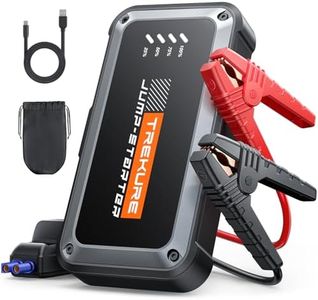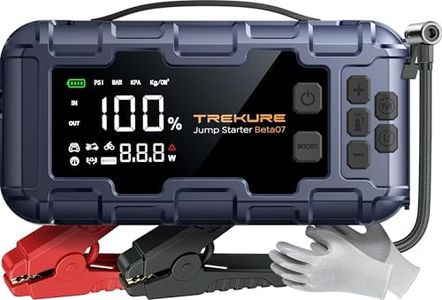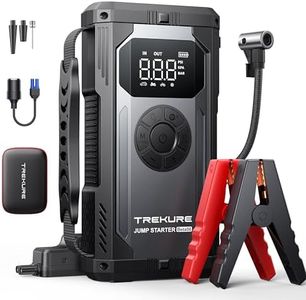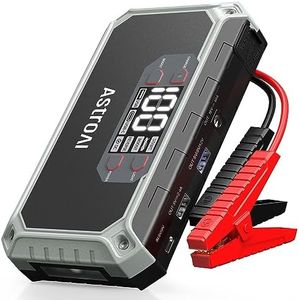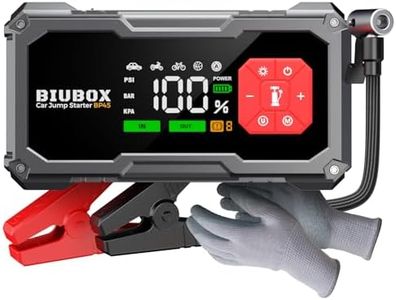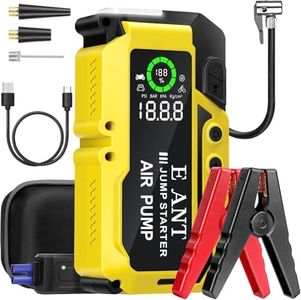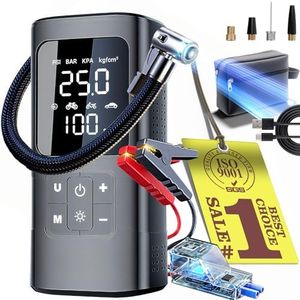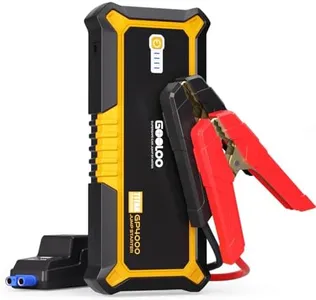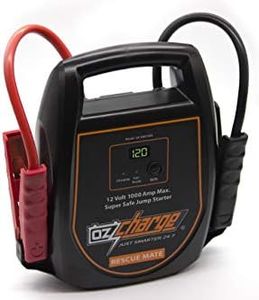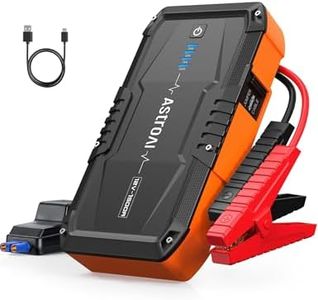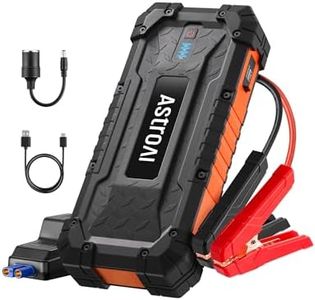We Use CookiesWe use cookies to enhance the security, performance,
functionality and for analytical and promotional activities. By continuing to browse this site you
are agreeing to our privacy policy
10 Best Portable Jump Starters
From leading brands and best sellers available on the web.Buying Guide for the Best Portable Jump Starters
Choosing the right portable jump starter can make a big difference when you need to start your car in an emergency. Portable jump starters are designed to give your vehicle’s battery a boost, helping you get back on the road quickly. When shopping for one, it's important to look beyond the brand and focus on the critical features that matter for safety, compatibility, and ease of use. Understanding the specifications and how they relate to your personal vehicle and needs will help you select a jump starter that you can count on.Peak Amps (Peak Current)Peak amps describe the maximum burst of electricity the jump starter can deliver to your car’s battery when you try to start it. This is important because different vehicles require different amounts of power. Smaller cars need fewer amps, while trucks or SUVs demand higher power. Generally, peak amps range from around 300A for small vehicles to 1000A or more for larger engines. To pick the right value, check your vehicle’s engine size and type; bigger engines and diesel engines require more amps. It’s better to choose a jump starter with enough peak amps to start your largest vehicle to be safe.
Battery Capacity (mAh)Battery capacity, usually measured in milliamp-hours (mAh), tells you how much energy the portable jump starter’s internal battery can hold. Larger capacities mean you can jump start more vehicles in a row before recharging or use the device to charge other gadgets like phones. Typical values range from about 6,000mAh to 20,000mAh or higher. If you drive often or expect to use it for multiple jumps or as a general power bank, opt for a higher capacity; if you only need it for emergencies and don’t plan to use it to charge devices, a lower capacity will suffice.
Portability (Size and Weight)Portability refers to how compact and lightweight the jump starter is. Smaller, lighter units are easier to store in your glove box or carry in a backpack. Larger ones may have more power but can be cumbersome. Think about how much storage space you have in your car and how much weight you’re comfortable managing. If convenience and easy storage are priorities, go for a more compact option, but make sure it still has enough power for your vehicle.
Safety FeaturesSafety features protect both you and your vehicle during use. Common protections include reverse polarity (in case you connect the cables incorrectly), short-circuit protection, overcharge protection, and spark-proof technology. These features prevent accidents and damage, especially important for less experienced users. To select the right one, look for a model that offers multiple safety protections to give you peace of mind, especially if you’re inexperienced with car batteries.
Additional FunctionsMany portable jump starters come with extra features like built-in flashlights, USB charging ports, or air compressors. These can be useful in emergencies or for charging other devices on the go. The value of these additions depends on how much you’ll use them—if you want an all-in-one emergency tool, seek out a jump starter with multiple features; if you prefer simplicity, focus just on its main function.
Operating Temperature RangeThe operating temperature range indicates in what weather conditions the device can safely function. Extremes of cold or heat can affect battery performance. If you live in an area with harsh winters or very hot summers, choose a jump starter with a wide temperature operating range to ensure it works reliably when you need it most.
